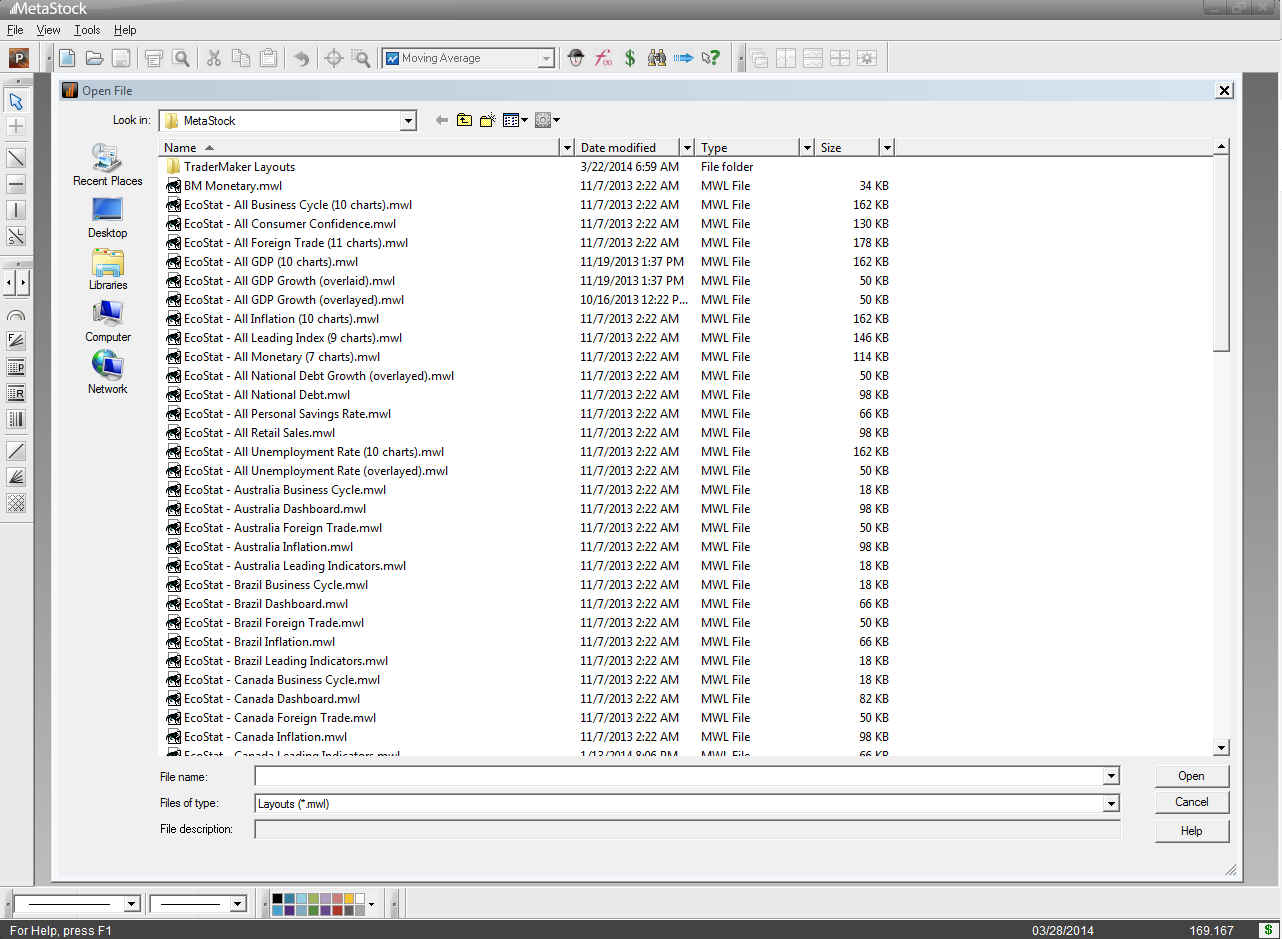MetaStock® SPRS Series - Week 168 – April 25, 2014 - MetaStock Spatial Pattern Recognition Skills Series written by Martha Stokes CMT
SNDK has been a stock in mentoring notes for TechniTrader Students since 2012 when it first came out of its trading range low. The Weekly Chart below shows a steady rise with periodic platforms as it moved up.
A Daily Chart shows consistent highs and lows of a classic platform sideways pattern. Platforms are a fairly new sideways pattern, due to the giant lot institutional orders that control price in a very specific range and pattern.
SNDK looked as if it was forming a top just a few days before it was set to release its earnings. Prior to the earnings release with occurred on the day of the gap, smaller lots attempted to sell short this stock, moving price down to the prior buy zone of the giant lots. This triggered giant lot automated orders which then triggered a High Frequency Trading HFT gap up at open on the news.
Many times smaller lot traders are on the opposite side of the trade when giant lots who are using Dark or Twilight Pools. Since intraday real time doesn’t reveal the Dark Pools, the smaller lot traders can often make the mistake of taking a position against the giant lots.
This is a major reason why day and intraday trading has become more difficult for smaller lot traders. It is especially true for small lot traders who use price indicators instead of volume, uptick versus downtick quantity, and accumulation/distribution quantity indicators.
One of the common misunderstandings regarding Dark Pool activity is that most traders assume that such huge lots will move price. The opposite is true. Since they have custom orders designed specifically for their style of buying and selling with the goal of NOT moving price, price indicators fail to reveal Dark Pool quiet accumulation. If the volume and quantity indicators and the new fundamental chart indicators had shown distribution patterns, then the move down would have been wise given the sell side bias and sentiment of the past few weeks. However, there was no indication during the prior 3 months of any rotation aka the lowering of held shares and no distribution.
Once the news came out before market open, HFT orders started filling the queues. HFTs use smaller order sizes but the number of orders 1000-3000 per second, creates extreme volume surges that can gap a stock several points in less than a second. The gap was not a break away gap however, as it did not clear the prior resistance. SNDK did have excellent earnings and revenues for its first quarter.
Summary
Earnings Season provides plenty of opportunities for traders of all styles and disciplines. Understanding what causes the price patterns the 2-3 months prior to an earnings season is critical to success.
For information on Candlestick Patterns go to CLICK HERE
Trade wisely,
Martha Stokes CMT
Chartered Market Technician
Member of Market Technicians Association
Master Rated Technical Analyst for Decisions Unlimited, Inc.
Instructor and Developer of TechniTrader Stock Market Courses
For additional training visit http://technitrader.com
This Stock Discussion and Training Lesson is sponsored by TechniTrader.com
MetaStock® Partner
©2014 Decisions Unlimited, Inc. All Rights Reserved.
TechniTrader is the Registered Trademark of Decisions Unlimited, Inc.
Disclaimer: All statements, whether expressed verbally or in writing are the opinions of TechniTrader and its instructors or employees, and are not to be construed as anything more than an opinion. Student/subscribers are responsible for making their own choices and decisions regarding all purchases or sales of stocks or issues. At no time is any stock or issue on any list written or sent to a student/subscriber by TechniTrader and its employees to be construed as a recommendation to buy or sell any stock or issue. TechniTrader is not a broker or an investment advisor it is strictly an educational service.












